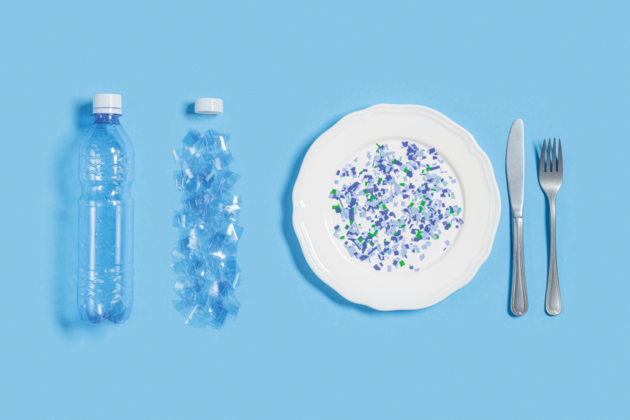
Focus on Food Safety: The plastic conundrum and impact on food safety risk assessment
By Dr. Amy Proulx
Food Safety Packaging Sustainability Editor pick plastic packaging Photo © yrabota / Adobe Stock
Photo © yrabota / Adobe Stock We can all agree the food industry needs to reduce its reliance on plastics, especially those that cannot be recycled, composted, or reused. In Canada, the food industry produces 35 per cent of all plastic waste, according to Environment and Climate Change Canada. The Canadian Comprehensive Zero Plastic Waste agenda has prioritized plastic reduction in the food retail industry.
The federal government’s plastic reduction agenda began with a ban on single-use plastics. Companies are required to reduce plastics, especially hard-to-recycle ones, and eliminate can and bottle ring carriers, checkout bags, cutlery, foodservice ware, stir sticks and straws. The Single Use Plastic Prohibition Regulation allowed a change to Canadian Environmental Protection Act’s (CEPA’s) Toxic Substances List and included Manufactured Plastics in it. However, the legislation was overturned by the Federal Court in November 2023.
The regulation and the repeal for the plastics ban hinged on the word, ‘toxicity’. The meaning of toxicity for food safety practitioners is different from how it is defined under CEPA. Food safety practitioners see a chemical hazard as something potentially injurious to human consumers. Under CEPA, the term, ‘toxicity,’ extends to chemicals and materials with the potential for enduring environmental harm.
Under section 64 in CEPA, the definition is, “a substance is toxic if it is entering or may enter the environment in a quantity or concentration or under conditions that (a) have or may have an immediate or long-term harmful effect on the environment or its biological diversity; (b) constitute or may constitute a danger to the environment on which life depends; or (c) constitute or may constitute a danger in Canada to human life or health.”
In food safety, using CODEX Alimentarius’s glossary, the words, ‘toxin’ or ‘toxic,’ only emerge with relation to pesticides and veterinary chemicals. Hazards are “a biological, chemical or physical agent in, or condition of, food with the potential to cause an adverse health effect.” Toxins can be acute, causing short-term immediate impacts, or they can be long term and chronic where exposure is small.
Plastics approved for food contact use are not inherently toxic to human health and have had been evaluated by Health Canada for safe use. The issue is not plastic in its standard form. Microplastics are emerging as a major area of concern for human health, as well as a concern in environmental contamination. Researchers are investigating the potential toxicity and long-term effects of microplastics. The science in this field is relatively new. Environmental microplastics were only first described in the early 2000s. Pubmed’s academic literature database indicates very minor uses of the term, ‘microplastics,’ in research literature before 2011. However, the term was referenced in almost 4000 articles in 2023. The science on microplastics has not yet created any direct causal links to toxicity, but many strong theories are being investigated.
This reframing of risk assessment, where human health is aligned with environmental health and sustainability, will have major implications for food safety management systems. Food safety practitioners who have followed its history can appreciate this potential movement. Threat assessment or TACCP came into force within the United States when terrorist threats to the food system and deliberate adulteration became a hazard. BRCGS has a standard for ethical trade and responsible sourcing. GFSI has developed a Sustainable Supply Chain Initiative to benchmark social compliance. It has set requirements such as no forced and prison labour, no child labour, freedom of association and rights to collective bargaining for workers, no discrimination and abuse, application of health and safety systems, application of building and fire safety codes, fair wages and employment practices, fair working hours, and ability to grieve working conditions. GFSI indicates they will have an environmental standard coming out in the near future. Encouraging or mandating food companies to consider environmental consequences as part of their quality management and supplier strategy is very likely in the future.
The food industry has an authentic need for plastics, and other lightweight barrier materials. Food safety and shelf-life extension are intrinsically tied to plastics use. The successful environmental transition to this is better plastics materials and better use and repurposing of existing plastics. Fortunately, we are seeing investments in this area.
Dr. Amy Proulx is professor and academic program co-ordinator for the Culinary Innovation and Food Technology programs at Niagara College, Ont. She can be reached at aproulx@niagaracollege.ca.
This column was originally published in the February/March 2024 issue of Food in Canada.
Print this page